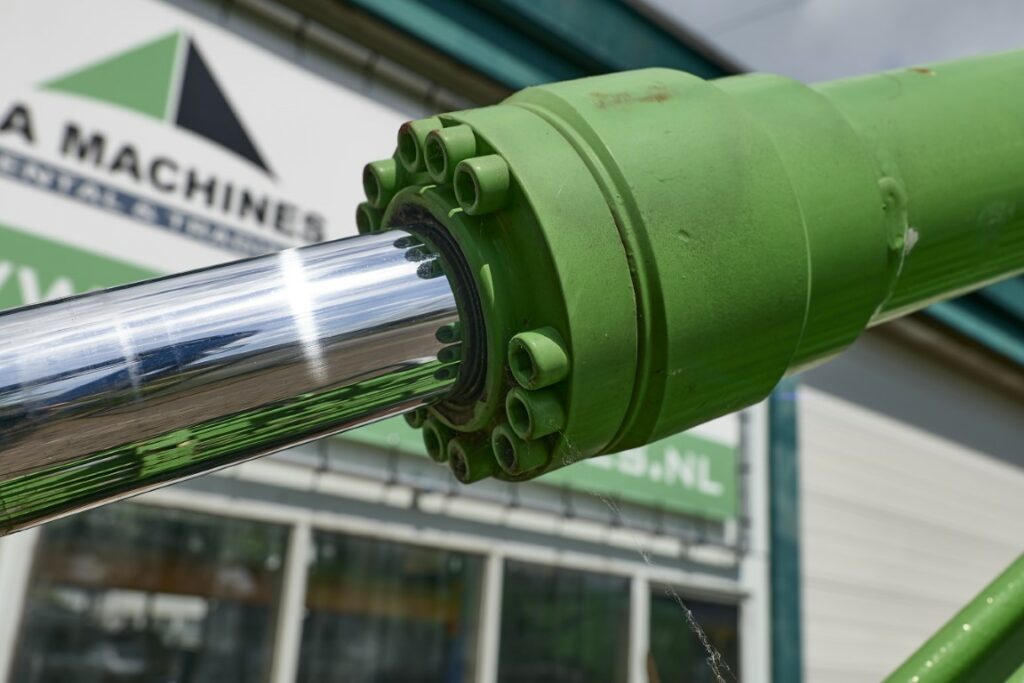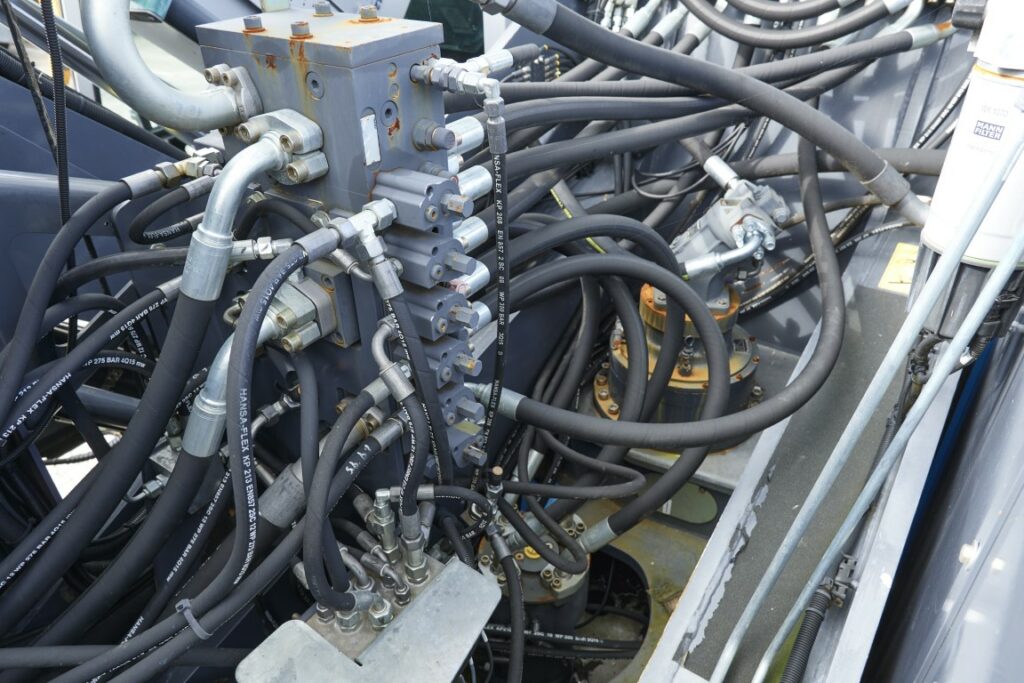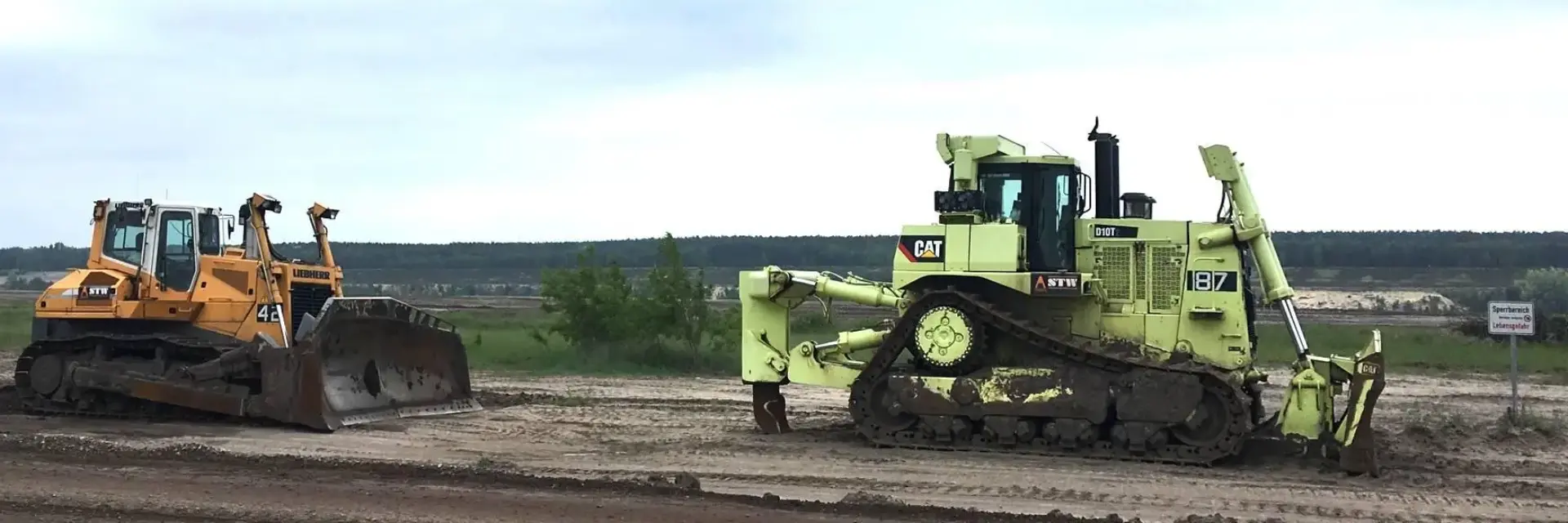The worst scenario for a Heavy Machinery user:
One of the most challenging situations for machinery operators is hydraulic pump failure, which can result in metal debris circulating through the entire hydraulic system. If not addressed immediately, this can lead to severe damage to critical components like valves, cylinders, and hydraulic motors.



How to Respond Quickly and Effectively?
If you find yourself facing a hydraulic pump breakdown, here’s our recommended step-by-step guide for repairs and long-term damage prevention:
1. Immediate Shutdown
- Stop the machine immediately: Continuing operation will spread metal debris throughout the system, risking more extensive damage. Halting the machine minimizes this risk. The same applies, by the way, if you have damage to the drive motor. Stop immediately and do not continue riding.
2. Complete System Flush
- Drain the hydraulic fluid: Metal shavings are likely contaminating the hydraulic oil. Removing all old fluid prevents further circulation of debris.
- Oil filtration and analysis: Fine-filter the hydraulic oil and send a sample to a lab to assess its condition. Based on the analysis, you may need to perform a kidney-loop filtration to clean the oil for reuse.
- Thorough system flush: Flush the entire hydraulic system, using the filtered oil where possible to remove contaminants from all parts of the circuit.
3. Filter Replacement
- Replace all hydraulic filters: Contaminated filters become ineffective at trapping metal debris. Replacing them ensures proper filtration after repairs.
- Upgrade to high-capacity filters: Consider installing additional filters in key areas to catch any remaining particles and further protect the system.
4. Inspect and Clean Key Components
- Inspect the pump and hydraulic components: Before replacing the pump, examine the hydraulic motor, control valves, and actuators for wear or contamination. These may need cleaning, servicing, or replacement.
- Clean the hydraulic reservoir: Metal debris often settles in the tank, so a thorough cleaning is essential to avoid future contamination.
5. Hydraulic Pump Replacement
- Replace the damaged pump: Since the pump is the source of the debris, it must be replaced with a new or rebuilt unit. Repairing a severely damaged pump is often insufficient.
6. Inspect Cylinders and Hydraulic Motors
- Check for scoring or damage: Hydraulic cylinders, solenoids, valves and actuators can be damaged by circulating debris. If there’s internal scoring, these components may need to be rebuilt or replaced.
7. System Testing
- Test after repairs: Once the pump is replaced, the system flushed, and new filters installed, refill with fresh hydraulic oil (or kidney-looped oil) and perform operational tests. Monitor pressure and flow to ensure everything is running smoothly.
- Monitor filters closely: Residual debris might still circulate, so check filters frequently and replace them as necessary until the system is fully clean.
8. Preventative Measures for the Future
- Routine fluid analysis: Regular hydraulic oil testing can detect early signs of contamination, allowing you to take corrective actions before major failures occur. In an earlier version of this newsletter, we explained the advantages of oil analysis.
- Consistent maintenance: Schedule routine system maintenance, including timely filter replacements and oil sampling, to extend the life of your hydraulic components and prevent costly downtime.
9. Where to Find a Replacement Hydraulic Pump?
- OEM Manufacturer: The highest quality option is to source an original equipment manufacturer (OEM) hydraulic pump through your machine’s local dealer. Though more expensive, OEM parts ensure a perfect fit and maximum reliability.
- Remanufactured or rebuilt pumps: For a cost-effective alternative, consider a remanufactured or rebuilt hydraulic pump. There are several suppliers offering varying levels of quality, so it’s best to consult with local contractors who have experience with reliable reman parts.
By acting quickly and following these steps, you can minimize downtime, prevent further damage, and keep your heavy machinery operating at its best. If you need assistance with parts, repair manuals or expert advice, we’re here to help! We can also support with valuation of machinery for the insurance, repair cost estimation and sourcing of a replacement pump.
Download a PDF version of this article here.
Follow our Newsletter about Used Machinery Inspection Topics
The Mevas Newsletter about Used Machinery Inspection Topics can also be found on the Plant & Equipment Website. If you are a LinkedIn user there is even more content about Used Equipment Inspections. But you must be logged in to read it.

